Lisztomania is unlike any movie ever made. A lot of films make that claim, but very few really deliver on it. (Of course, I’m talking about movies made for actual studios and intended to be sent out for mass consumption.) As a measure of its difference, quite a few years ago I stumbled across someone on a movie message board describing a movie he’d seen, but didn’t know the title of. What he was describing was Lisztomania, and no one believed there could any such movie as the one he was talking about. One person suggested he needed to “ease up on the coffee.” Others were less kind, claiming he was either lying, or on drugs. The truth was simpler — he was merely describing something no one could imagine possibly existed.
This is Ken Russell unfiltered—straight-up and unafraid to go wherever his mind leads him. I remember watching it in 2005 when we were lining up titles for the Asheville Film Festival and deciding, “No, it’s still ahead of its time.” Well, maybe this utterly over-the-top biopic on Messrs. Franz Liszt (Roger Daltrey) and Richard Wagner (Paul Nicholas) is still ahead of its time, but here it is anyway—all set to frighten the horses and horrify the timid. This is a very hard film to describe in a few lines—or even a few pages. It’s the most intensely stylized treatment of the biographical film in terms of personal interepretation (or re-interpretation) imaginable—and it represents Russell’s most gleeful attempt at bridging the historical with the present. It takes two of the biggest 19th-century figures in music and presents them as rock stars—and does it in such a way that it totally sends up the academic approach to biopics by actually including more factual information within its overall fantasy than is generally found in a dozen “respectful” biographical films. It was, of course, savaged by many critics in 1975 (Rex Reed said on TV, “It’s got full-frontal nudity and everything. It is filthy!”) and it’s not going to be to everyone’s liking today. How wild a ride is it? Well, Ringo Starr plays the Pope, Liszt grows a 10-foot penis, and Wagner comes back to life as a combination of Adolph Hitler and the Frankenstein Monster—and that’s just for starters. A lot of movies claim to be outrageous and unlike anything you’ve ever seen.This one actually is—all in glorious Technicolor and explosive bad taste with something to offend everybody!
There’s really nothing that can be said that will completely prepare anyone forLisztomania—and I’m not at all sure that that’s a bad thing. Goodness knows, I was far from prepared for it in 1975. At the time, I was pretty much a Ken Russell neophyte. I had seen Tommy—16 times, in fact—and I had seen that incomprehensible 72-minute TV cut of The Boy Friend and the original X-rated US print of The Devils. So I wasn’t exactly green, but neither was I seasoned. Worse, we somehow ended up at the multiplex (that it was showing at a multiplex as a regular release now seems unthinkable) after the film started. After killing a lot of time in the lobby, we decided to venture into the theater during the movie’s last ten minutes. That means we walked in to find the Wagnerstein monster stalking through the ghetto with an electric guitar machine gun (with a barbed-wire electrical cord) mowing down the Jewish populace. I didn’t know what to think.
Apparently neither the theater nor Warner Bros. knew what to think, either. The theater ran the film’s trailer before the movie. That trailer (which I haven’t seen since) offered the encouraging advice, “See Ken Russell’s new film, Lisztomania! You won’t understand it, but you’ll love every minute of it!” Well, I did love every minute of it, but I kind of did understand it. More correctly, I understood that it was indeed about something and that it was unique. Of course, all this did was make me determined to actually understand it, which led to buying an awful lot of Liszt recordings and every book I could find on Liszt and Wagner. One thing Russell’s films were always very good at was keeping me broke in this manner. Financially, that’s a downside, but it’s also one of the appeals—the films leave you so much to explore in their wake.
I quickly grasped that part of the film’s idea was to satirize the standard old style biographical films on composers—things like Charles Vidor’s A Song to Remember(1945) and the same director’s Song Without End (1960). Russell made that much very clear in any early scene backstage at a Liszt concert—in a room filled with every luminary of music then alive, most of whom are played by Russell’s stock company. Wagner is there (dressed in a sailor suit and cap labelled “Nietszche”) trying to interest the famous pianist in Rienzi (“You thought it was a masterpiece?” he hopefully asks).
Also on hand are Brahms (played by Russell’s usual editor Michael Bradsell), whom Liszt brushes off with a curt, “Piss off, Brahms!”—explaining to Wagner, “I always feel that people who like Brahms would prefer to have no music at all. He’s a right wanker.” (And there was a long-standing enmity between Liszt and Brahms.) We also see Mendelssohn (Otto Diamant), Rossini (Ken Parry), Berlioz (Murray Melvin), and a tubercular Chopin (Ken Colley), kneeling at the feet of George Sand (Imogen Claire). It’s the Hollywood biopic gone mad. But there’s more point than that and the simple fact that it’s fun. You see, Liszt really did give a benefit concert in Bonn—“to build a monument to your beloved Beethoven that your beloved countrymen neglected to build,” he tells Wagner. And therein is the point—there’s a lot of fact mixed in with the fantasy. More fact, in fact, than in any respectful Hollywood biopic.
All of this, however, is just the tip of the iceberg—both in terms of how outrageous the film becomes, and in what Russell is trying to do. The success of Tommy had opened up Russell to a brand new audience—the youth audience, which Russell himself admitted he’d previously never given much thought to. But in making Tommy, he’d not only attracted them, he’d discovered that he liked rock musicians. Well, here was a chance to work with them some more and to make a film for this newfound audience—one that would truly make that leap he’d long dabbled in to make historical characters resonate with modern viewers in a way they could relate to. This time, he’d go all the way and turn Liszt and Wagner into 19th-century rock stars. It wasn’t that far-fetched either. Russell didn’t create the term “Lisztomania,” That happened in 1844 when poet and essayist Heinrich Heine coined the word to describe the furor over Liszt demonstrated by the audiences at his concerts.
Of course, the sad fact was that this newfound audience were largely as baffled by Lisztomania as the studio. For that matter, its R rating—a hard R, at that—made it (theoretically, at least) inaccessible to the younger audience members, who didn’t face that problem with the PG-rated Tommy. And, of course, the film flopped. That it got made at all is something of a testament to the fact that 37 years ago studios were a lot more daring than they are today—and, for that matter, filmmakers were a little bolder. The filmmakers had no idea, though, that the era of the superstar director was rapidly coming to an end.
It didn’t look like it was ending at that precise moment in time. After all,Lisztomania had a big multi-page spread inPlayboy and had been on the cover of Films and Filming. But the truth was that an era was ending—in more ways than one. Films like Lisztomania had more to do with a 1960s sensibility, but then that’s not so odd. In terms of what we think of as “the 60s,” that doesn’t really come into being till 1964 or ‘65. I think it’s telling that Lisztomania and Richard Lester’s Royal Flash opened in New York on the same day (Oct. 10)—and that they represented the last time either filmmaker enjoyed quite the freedom they’d had till that moment. (In a sense, it was the day the ‘60s really ended.) And Lisztomania became what critic Ross Care called at the time “a brilliant, sadly dangling film in search of an audience that perhaps doesn’t exist.”
Stylistically, Lisztomania may be pretty far-out—though it’s explicable enough in Russell terms—but it’s also unusual in Russell’s oeuvre. too. It is far and away Russell’s most studio-created film. For a filmmaker so known for shooting out of doors and creating all manner of gorgeous exteriors, Russell only gets away from the studio in a handful of brief scenes. Most of the film takes place on soundstages, which gives it a very different look. It’s also the most physically dark of Russell’s films. The cinematography is never murky—everything we’re meant to see is clearly lit—but the lighting scheme is definitely low-key, giving the film a vaguely sinister quality that’s hard to quite shake. And that’s odd, because it’s otherwise a very playful—albeit sometimes angry—film.
But it should always be remembered that it’s meant to be fun. It always was. For Russell fans, it’s a field day of Russell guest-star bits—some of which are amazingly buried. The chances of the casual viewer spotting Georgina Hale and Isabella Telezynska as (respetively) “most promising actress” and “millionaress”—the former in reference to Hale’s being called that after Mahler and the latter in reference to Telezynska as Madame von Meck in The Music Lovers—are pretty much nil. The parade of stock company players as composers is easier, and no one is likely to miss Oliver Reed’s unbilled bit as Princess Carolyn’s servant. The references to Chaplin, Daltrey spoofing Pete Townshend’s guitar-playing style (on a lyre no less), the horror film goofs, Wagner’s Superman comic book, and so forth are also apparent. The trick, perhaps, is that they come pouring outside so quickly that they might well be sometimes overlooked due to volume alone.
The film’s ending, too, is all in fun, yet it’s fun of an interesting kind. In its way, it’s a summation of Russell’s entire body of work up to that point. For all the condemnation—or disappointment—that can be found in Russell’s portrayals of artists whose private lives may not have lived up to the works the created, well, here is the answer. He gives old Franz the happiest ever after ending imaginable—and I believe its joyousness is 100-percent sincere. Yeah, it might be a little goofy (another dig at the traditional biopic), but Russell presents it with all the considerable cinematic excitement he can muster. It’s very, very real—and I believe it extends to every artist that ever came under his gaze.
Unfortunately, Lisztomania has never quite gotten the appreciation it deserves. Oh, there are clear intimations of it in Baz Luhrmann’s Moulin Rouge! (2001) and Sofia Coppola claimed that it had inspired her 2006 Marie Antoinette (though only in a mild way, to judge by her film). But the film itself is still something of an orphan. While there was a (lousy) VHS release of it and a very nice laserdisc (that was unfortunately prone to what is called “laser rot”), the only commercial DVD we had for a long time was from Great Britain, and it wasn’t a good transfer. Fortunately, Warner Bros. finally came out with a good copy through the “Archive” line, which is what is being run here. It isn’t perfect — the film deserves a DCP or at least a Blu-ray — but at least it was mastered by someone who actually cared about the film. In fact, while it was in the works, I got an e-mail asking me what the film’s opening was supposed to look like. It seems that the predominately blue first scene had faded and started to turn pink (film preservation is not only for 80-year-old movies), but it was able to be restored with a little advice. What we have now is the best Lisztomania has looked since 1975. You may or may not understand it, but I do hope you love every minute of it. Regardless, you’re bound to admit you never saw anything quite like it.
The Asheville Film Society is showing Lisztomania Wednesday, Oct. 15, at 7:30 p.m. in at The Carolina Asheville as part of the Budget Big Screen series. Admission is $6 for AFS members and $8 for the general public. Special guest Lisi Russell (Ken Russell’s widow) will introduce the film with Xpress movie critics Ken Hanke and Justin Souther.


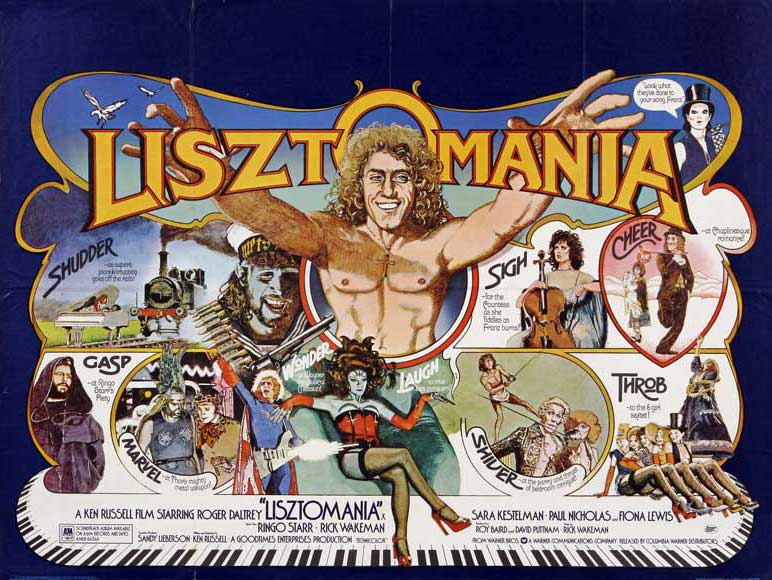
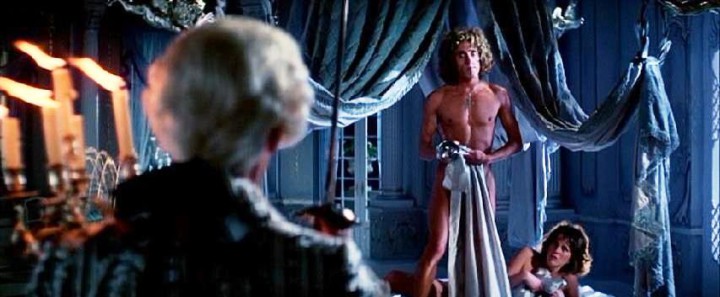
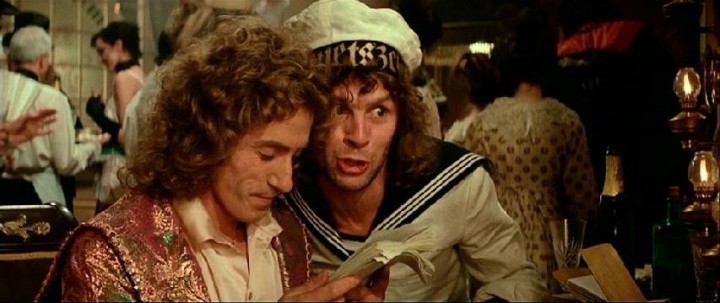
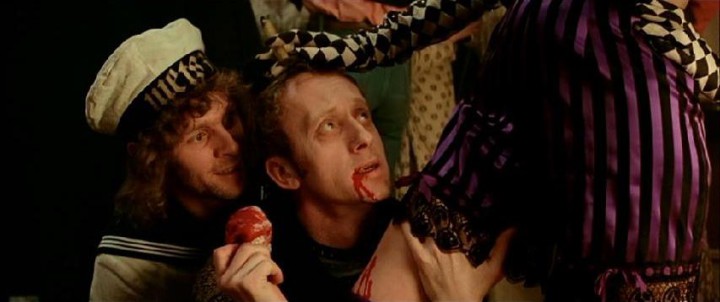
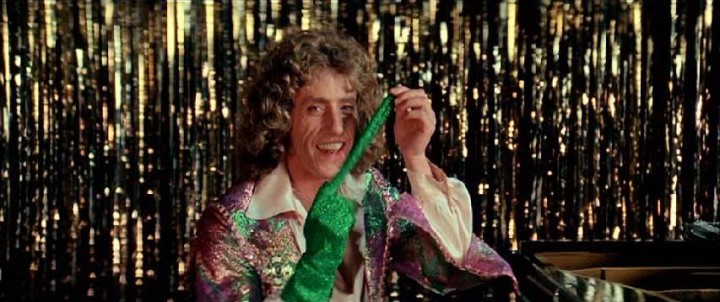
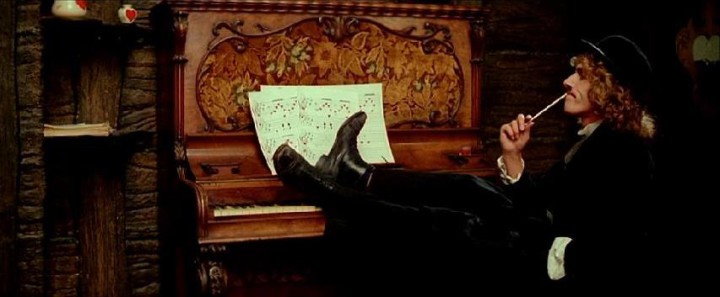
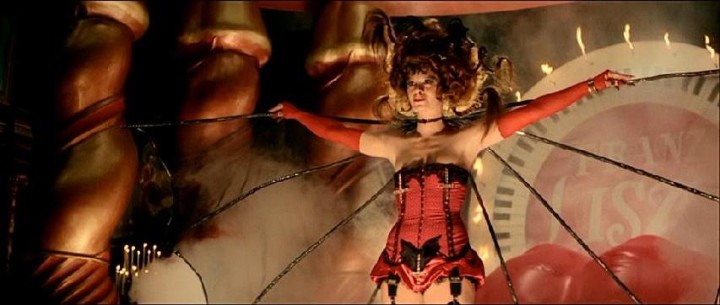
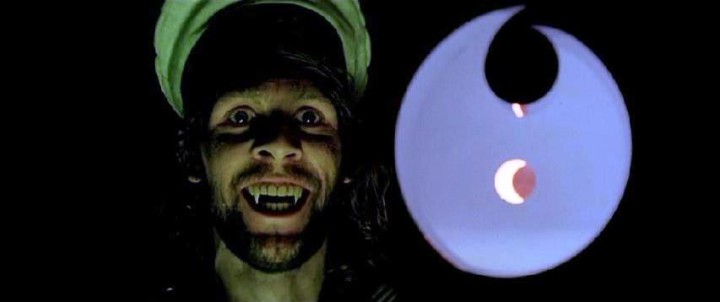
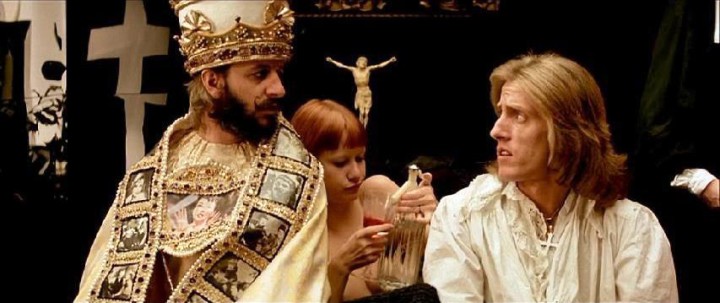
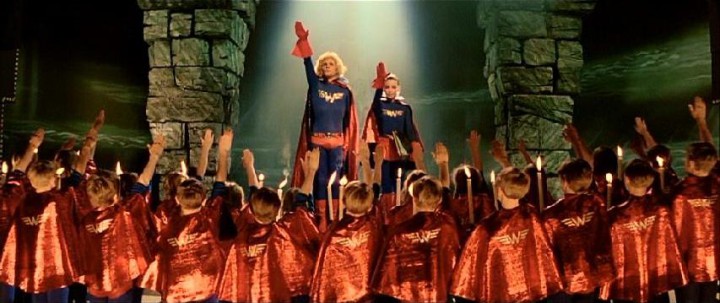
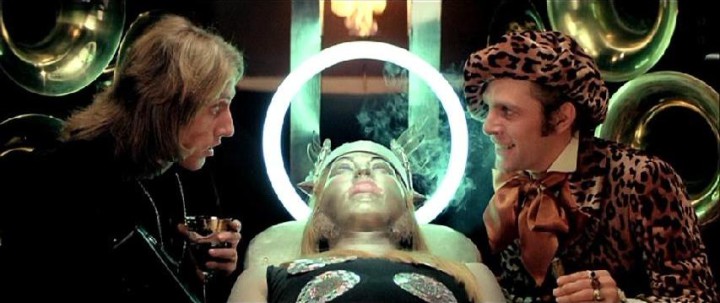
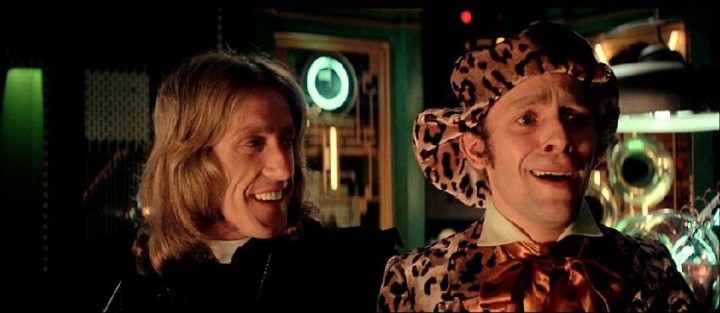
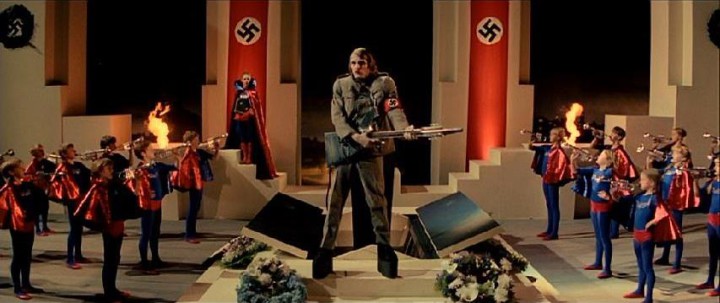
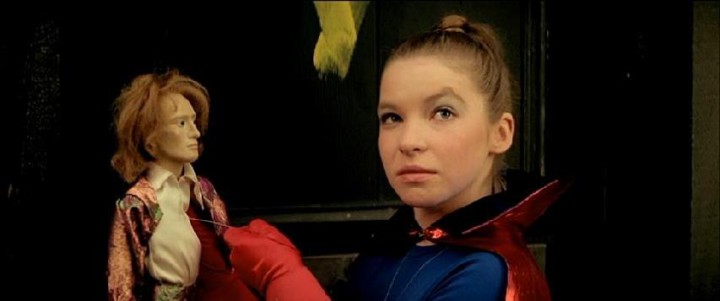
Tomorrow…
Well, Lisi is in town and everything is set for this evening.